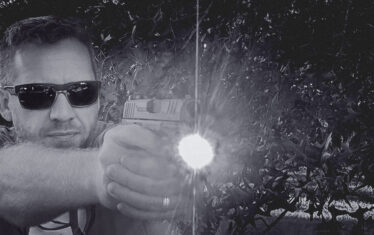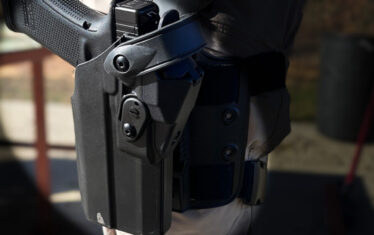Not too many years ago, red dot sights on handguns were a novelty. The previous generations of shooters had only known open/iron sights, and when red dots started showing up on handguns, many felt they were not needed and only complicated the process. This, not to mention a lack of faith in the trustworthiness of such technology that is still felt by some shooters.
Fast forward to modern times, and red dots on handguns are here to stay. Although manufacturers do still launch new models that are not optics-ready, they’re becoming farther and fewer between. Most often, you’ll see a new handgun advertised as an Optics-Ready model, also referred to as MOS. Some gunmakers have even begun shipping new guns with red dot sights already mounted and zeroed.
This is what brings us to red dot footprints.
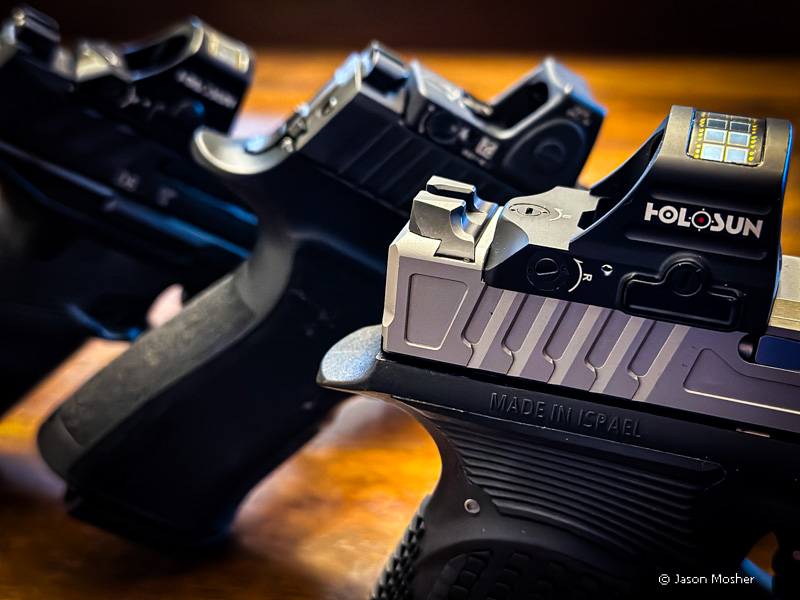
Most of the time, when a new red dot sight comes out, it lists the footprint. This can be confusing at times because there are so many different footprints out there. If you use a wide variety of red dots regularly, this isn’t a complicated subject. But if not, you probably have to do a quick search to find out what footprint your handgun has.
And that’s the point of this guide. Here’s the basic run-down on the most common standards of mounting red dots to handguns.
Glossary of Red Dot Mounting Terms
There are a lot of terms and abbreviations associated with red dots and how they mount to the gun. When searching for a red dot, it’s easy to focus on the brand, price, and overall size of the optic. But you also want to pay attention to the footprint of the optic to ensure it mounts to your handgun.
The following are some common terms you will see regarding pistol-mounted red dots.
Mounting Standard
It would be nice if all manufacturers used the same mounting standard for red dots, but unfortunately, that is not the case. There are some, however, that have become widely popular with manufacturers and are now considered a “standard” mounting style.
When you see the term “standard mounting pattern” associated with a red dot, it will still be accompanied by a name. That name refers to the footprint of the optic, which is the size needed to mount onto the handgun.
Footprint
The footprint of an optic is the combination of holes that screw onto the gun’s slide, and pins (or bolts) the optic rests on.
Optic manufacturers must use a footprint on the bottom side of the optic so it will attach properly to a handgun. Firearms manufacturers must cut out an area on the slide for the red dot to connect to.
Both the cutout on the slide and the bottom of the optic must match. This matching combination is the footprint.

Each different footprint will have a name, which we will discuss more below.
Some footprints are more popular than others so you will see them used often. For example, the term “RMR” is associated with many optics. RMR is a footprint mounting pattern made popular by Trijicon’s RMR red dot. But you can also find other optics, like the Holosun 507c, that use the RMR footprint.
Adaptor Plates
Because there are so many footprints used with red dots, many gun manufacturers have started making optic plates for their guns.
An optic plate is a thin piece of metal that screws onto the cutout area of the slide (where the optic goes) with a specific footprint on the top of the plate. This allows you to change the plate when a different footprint is needed.
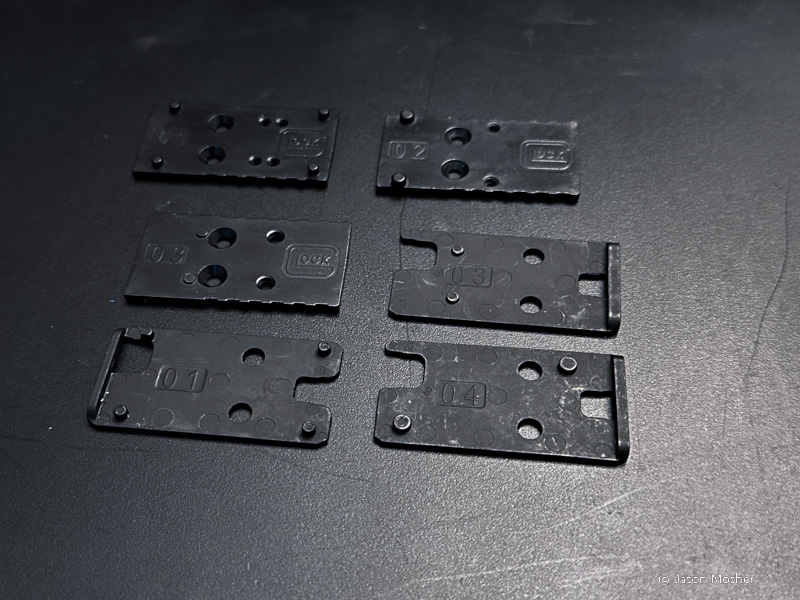
Screw Hole Pattern
The footprint of an optic will have a specific pattern for screws that mount the optic to the gun or optic plate. When you screw the optic to the gun, the screws must line up with the holes in the slide.
Guns that use plate adaptors may have multiple holes on the tops of the slide. This is so the screws for a specific footprint can pass through the optics plate and into the top of the gun.
Bolt Pattern
A bolt pattern for an optic is the location and number of bolts, also known as pins or recoil lugs. These bolts stick up from the top of the slide on the gun or optics plate.
An optic will have holes in it made to slide over these bolts. Some footprints use four bolts and others use two. The location and distance between the bolts will also be specific to each footprint.

Common Footprints for Optics
Trying to figure out all the footprints used by optics and gun manufacturers is confusing. Here is a list of the most common footprints you will see associated with pistol-mounted red dots.
RMR
The RMR footprint has two screw holes and two front bolts (recoil lug holes on the optic) in the corners. This is one of the most popular footprints used with pistol-mounted red dots. Here are a few of the red dot optics that work with the RMR footprint.
- Trijicon RMR
- Trijicon SRO
- Holosun 507C
- Holosun 407X2
- Swampfox Kingslayer
- Swampfox Justice
- Riton X3 Tactix PRD
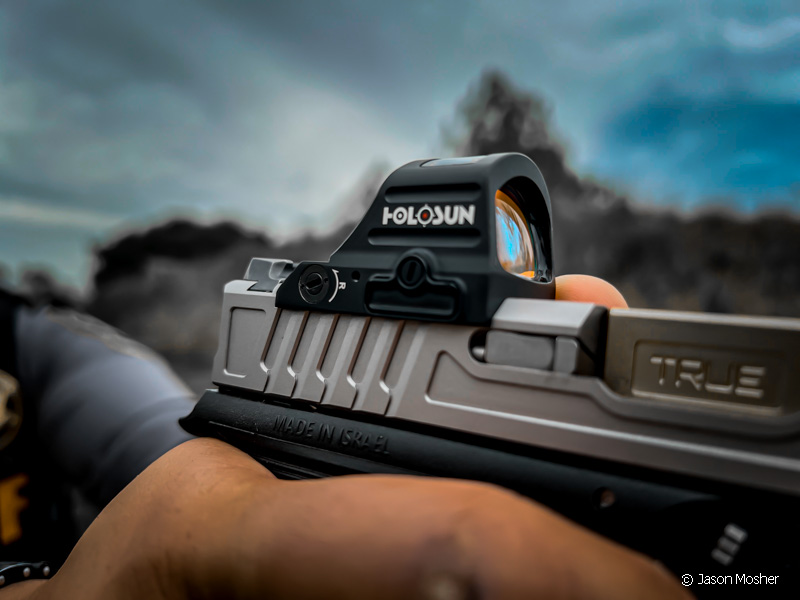
Shield RMSc Footprint
This pattern uses two screw holes and four posts on the slide and holes for the posts (recoil lugs) on the optic. Here are some popular sights that use the RMSc footprint.
- Swampfox Sentinel II
- Vortex Defender
- Primary Arms Classic Series 21mm Micro Reflex Sight
- JP Enterprises Jpoint
- Sig Sauer Romeo Zero
- Holosun 507K
- Holosun EPS Carry
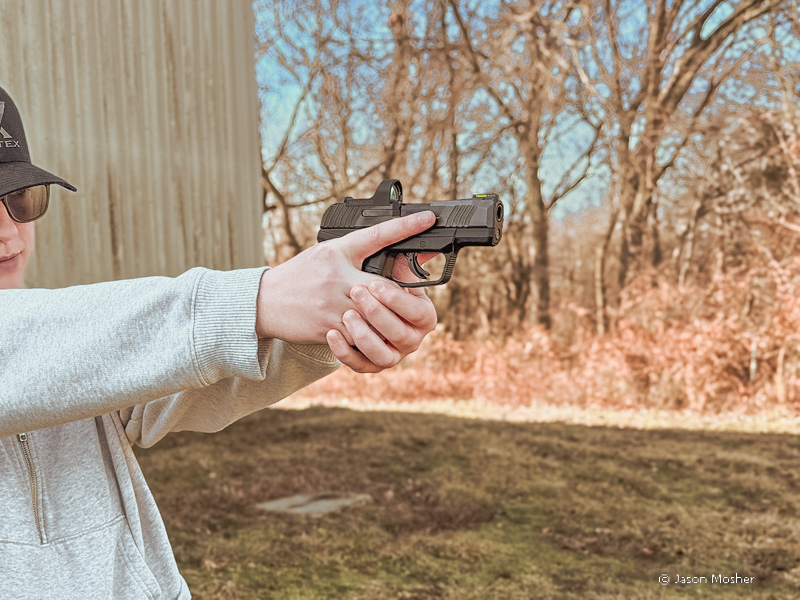
Glock MOS Footprint
Glock made their own proprietary system called the MOS (Modular Optic System). This was really its own footprint, but Glock made it for their adaptor plates.
The plates connect to the slide using the MOS footprint and allow an optic to mount on top of the plate. Each plate has a different footprint on top allowing you to use optics with different footprints on their guns.
Holosun, however, made an optic that works directly with the MOS footprint, meaning you can leave the adaptor plate off and mount the optic directly onto the Glock pistol.
- Holosun SCS MOS
Docter/Noblex Footprint
Probably the most popular footprint when optics were becoming a thing, the Docter footprint is falling from popularity. But some companies still use it today so it’s on our list.
This footprint uses two screws and four posts. You will not see very many new optics using this footprint but there are a few that work with the Doctor/Noblex footprint.
- Burris Fastfire 2
- Leapers UTG OP3 Micro
- Vortex Viper
- Vortex Venom
- Hawke Sport Optics
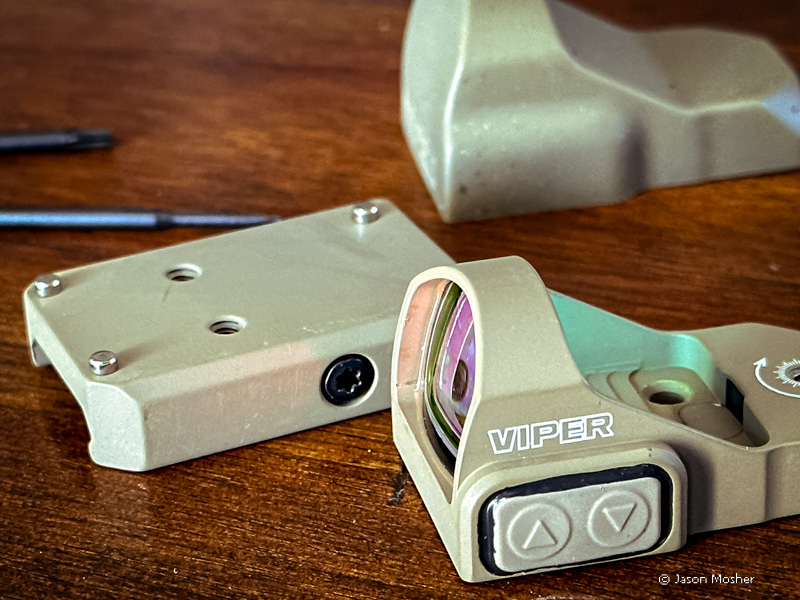
Crimson Trace: CT Rad and CT Rad Micro Footprint
Crimson Trace red dots use the CT Rad Micro footprint, which is compatible with the Shield RMS footprint. The CT Rad footprint is compatible with the Docter footprint.
The way of the future?
Some people love handgun-mounted optics and others do not. But either way, they are becoming the way of the future. Most gun companies appear to be using the RMR and Shield RMSc patterns for new handguns, but we will no doubt continue to see other footprints being used and possibly new ones in the future.
One reason I like Glock MOS pistols is because they provide multiple plates with their pistols. This makes it easy to mount a variety of optics with different footprints to them.
Other manufacturers make adaptor plates that can be purchased on their website for different optics. But many also cut the slide to fit a specific footprint, requiring the red dot to have the corresponding footprint.
When purchasing an optic for a handgun, check with the manufacturer to see what footprint the gun was designed to use. Then, find a red dot that fits that pattern.
One thing to keep in mind is the size of the optic will affect which holster can be used. Holster manufacturers make holsters specifically for different optics. For Safariland, the holster finder will ask you to select which optic is being used on the firearm to ensure the right fit.


